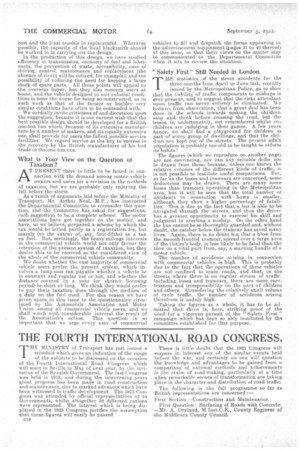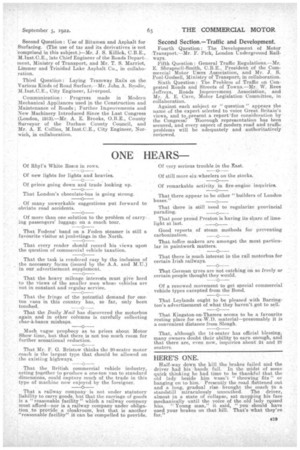THE FOURTH INTERNATIONAL ROAD CONGRESS.
Page 2

Page 3

If you've noticed an error in this article please click here to report it so we can fix it.
THE MINISTRY of Transport has just issued a schedule which gives an indication of the range of, the subjects to be discussed on the occasion of the Fourth International Road Congress which will meet in Seville in May of next year, .by the invitation of the Spanish Government. The last Congress was held in 1913, and during the intervening years great progress has been made in road construction and maintenance, due to marked advances-which have been witnessed in traffic development. The 1913 Congress was attended by official representatives of 44 Governments, whilst altogether 52 different nations were represented. The interest which is being displayed in the 1923 Congress justifies the assumption that these figures will easily be passed
c18 There is little doubt that the 1923 Congress will surpass in interest any of the similar events held before the war, and certainly no one will question the knowledge and advantages to be gained from a comparison of national methods and achievements in the realm of road-making, particularly at a time when remarkable scenes of transformation are taking place in the character and distribution of road traffic.
The following is the full programme so far as British representatives are concerned :— First Section.—Construction and Maintenance. First Question : Surfacing of Roads with Concrete. —Mr. A. Dryland, M.Inst.C.E., County Engineer of the Middlesex County Council. Second Question : Use of Bitumen and Asphalt for Surfacing. (The use of tar and its derivatives is net 'comprised in this subject.)—Mr. J. S. Killick, C.B.E., M.Inst.C.E., late Chief Engineer of the Roads Depart_ inent, Ministry of Transport, and Mr. T. S. Marriot, Limmer and Trinidad Lake Asphalt Co., in collaboration.
Third Question : Laying Tramway Rails en the Various Kinds of Road Surface.—Mr. John A. Brodie, M.Inst.O.E., City Engineer, Liverpool.
Communication : • Progress. made in Modern Mechanical Appliances used in the Construction and Maintenance of Roads ; Further Improvements and New Machinery Introduced Since the Last Congress (London, 1913).—Mr. •A. E. Brooks, 0.B.E., County Surveyor of the Durham County Council, and Mr. A. E. Collins, M.Inst.C.E., City Engineer, Norwich, in collaboration.
Second Section.—Traffic and Development.
Fourth Question.: The Development of Motor .Transport.—Mr.: F. Pick, London Underground Railways.
Fifth. Question : General Traffic Regulations.—Mr. E. Shrapnell-Smith, C.B.E., President of the Commercial Motor Users Association, and Mr. J. S. Pool-Godsell, Ministry of Transport, in collaboration.
Sixth Question : The Problem of Traffic on Congested Roads and Streets of Towns.—Mr. W. Rees Jeffreys, Roads Improvement Association, and Mr. A. E. Cave, Motor Legislation Committee, in collaboration.
Against each subject or " question " appears the name of the expert selected to voice Great Britain's views, and to present a report'for consideration by the Congress; Thorough representation has been secured, and every aspect of modern road and traffic problems will be adequately and authoritatively revieeved.






























